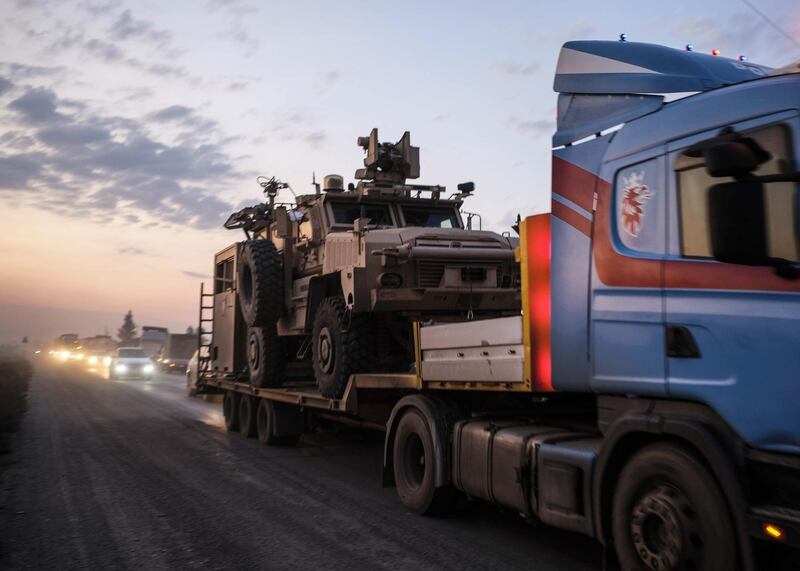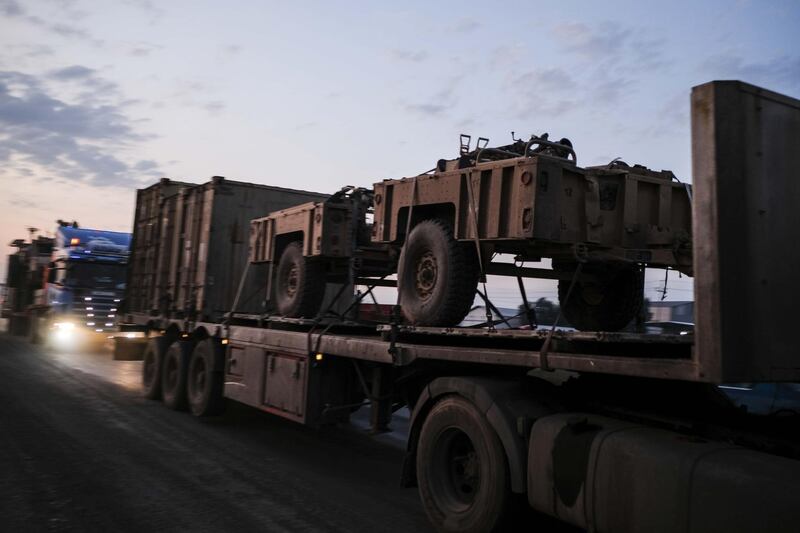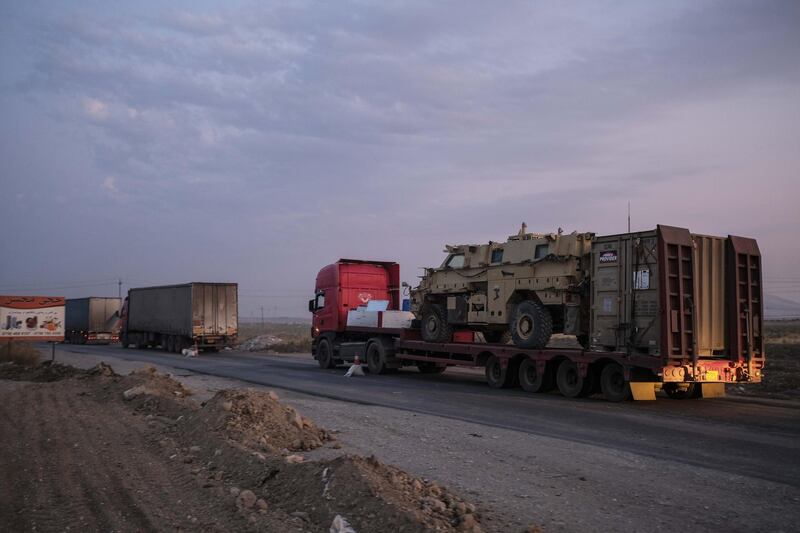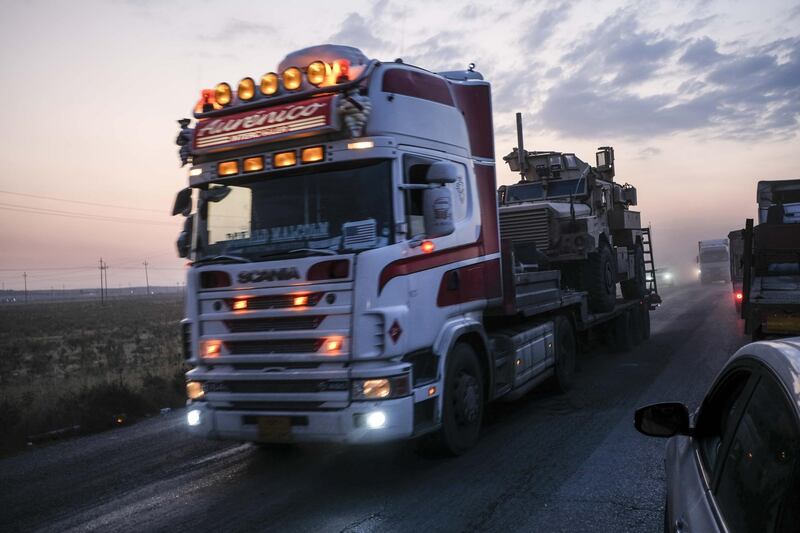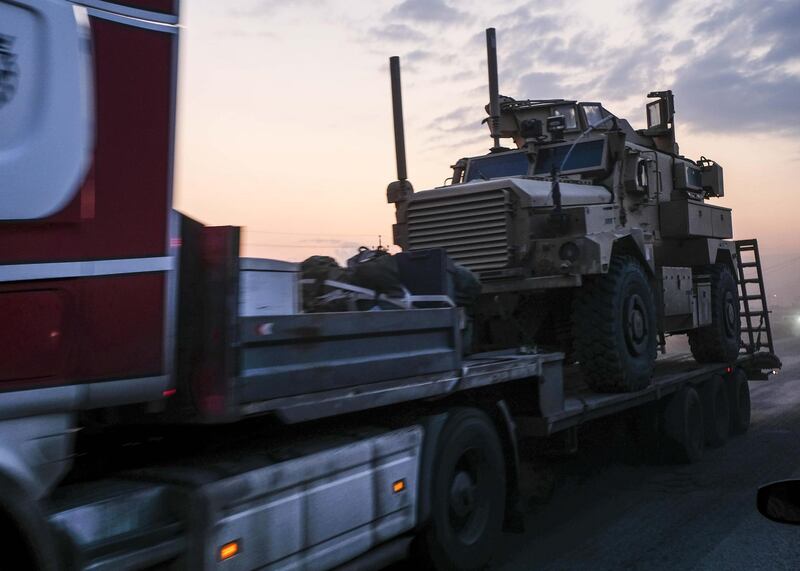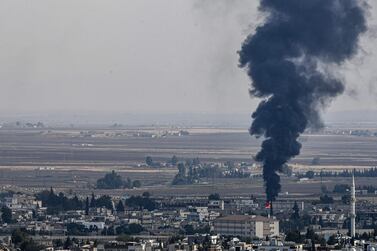All US troops leaving Syria will be redeployed in western Iraq to conduct operations against ISIS, Defence Secretary Mark Esper said on Sunday.
Speaking to reporters travelling with him to the Middle East, Mr Esper did not rule out the idea that US forces would conduct counter-terrorism missions from Iraq into Syria. But he said those details will be worked out over time.
His comments were the first to specifically lay out where American troops will go as they leave Syria and what the counter-ISIS fight could look like. Mr Esper said he has spoken to his Iraqi counterpart about the plan to shift the more than 700 troops leaving Syria into western Iraq.
The developments made clear that one of President Donald Trump’s rationales for withdrawing troops from Syria was not going to come to pass any time soon. “It’s time to bring our soldiers back home,” he said on Wednesday.
As Mr Esper left Washington on Saturday, US troops were continuing to pull out of northern Syria after Turkey’s invasion into the border region. Reports of sporadic clashes continued between Turkish-backed fighters and the US-allied Syrian Kurdish forces despite a five-day ceasefire agreement hammered out on Friday between US and Turkish leaders.
Mr Trump ordered the bulk of the approximately 1,000 US troops in Syria to withdraw after Turkish President Recep Tayyip Erdogan made it clear in a phone call that his forces were about to invade Syria to push back Kurdish forces that Turkey considers terrorists.
The pullout largely abandons the Kurdish allies who have fought ISIS alongside US troops for several years. Between 200 and 300 US troops will remain at the southern Syrian outpost of Al Tanf.
Mr Esper said the troops going into Iraq will have two missions.
“One is to help defend Iraq and two is to perform a counter-ISIS mission as we sort through the next steps,” he said. “Things could change between now and whenever we complete the withdrawal, but that’s the game plan right now.”
The US currently has more than 5,000 American forces in Iraq, under an agreement between the two countries. The US pulled its troops out of Iraq in 2011 when combat operations there ended, but they went back in after the ISIS began to take over large areas of the country in 2014. The number of American forces in Iraq has remained small due to political sensitivities in the country, after years of what some Iraqis consider US occupation during the war that began in 2003.
Mr Esper said he will talk with other allies at a Nato meeting in the coming week to discuss the way ahead for the counter-ISIS mission.
Asked if US special operations forces will conduct unilateral military operations into Syria to go after ISIS, Mr Esper said that is an option that will be discussed with allies over time.
He said one of his top concerns is what the next phase of the counter-ISIS missions looks like, “but we have to work through those details. He said that if US forces do go in, they would be protected by American aircraft.
While he acknowledged reports of intermittent fighting despite the ceasefire agreement, he said that overall it “generally seems to be holding. We see a stability of the lines, if you will, on the ground.”
He also said that, so far, the Syrian Democratic Forces that partnered with the US to fight ISIS have maintained control of the prisons in Syria where they are still present. The Turks, he said, have indicated they have control of the ISIS prisons in their areas.
“I can’t assess whether that’s true or not without having people on the ground,” said Mr Esper.
He said the US withdrawal will be deliberate and safe, and will take “weeks not days.”
